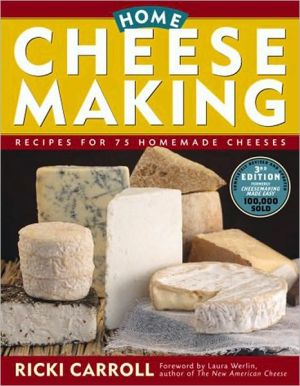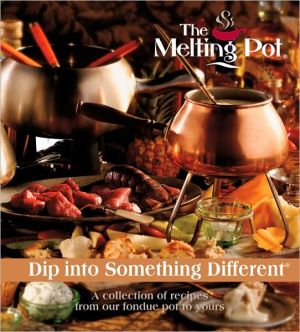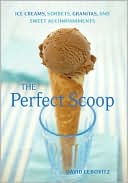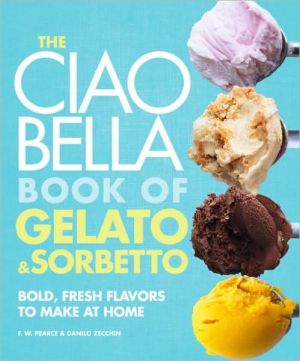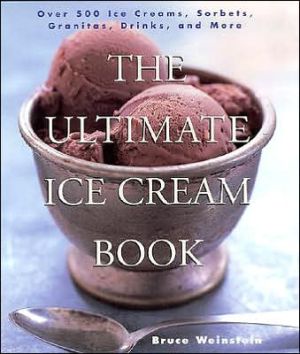Home Cheese Making: Recipes for 75 Homemade Cheeses
The classic home cheese making primer has been updated and revised to reflect the increased interest in artisanal-quality cheeses and the availability of cheese making supplies and equipment.\ Here are 85 recipes for cheeses and other dairy products that require basic cheese making techniques and the freshest of ingredients, offering the satisfaction of turning out a coveted delicacy. Among the step-by-step tested recipes for cheese varieties are farmhouse cheddar, gouda, fromage blanc,...
Search in google:
The classic home cheese making primer has been updated and revised to reflect the increased interest in artisanal-quality cheeses and the availability of cheese making supplies and equipment. Here are 85 recipes for cheeses and other dairy products that require basic cheese making techniques and the freshest of ingredients, offering the satisfaction of turning out a coveted delicacy. Among the step-by-step tested recipes for cheese varieties are farmhouse cheddar, gouda, fromage blanc, queso blanco, marscarpone, ricotta, and 30-minute mozzarella. Recipes for dairy products include crFme frafche, sour cream, yogurt, keifer, buttermilk, and clotted cream. There are also 60 recipes for cooking with cheese, including such treats as Ricotta Pancakes with Banana Pecan Syrup, Cream Cheese Muffins, Broiled Pears and Vermont Shepherd Cheese, Prosciutto and Cheese Calzones, and Grilled Vegetable Stacks with Roasted Red Pepper Sauce. Profiles of home cheese makers and artisan cheese makers scattered throughout the text share the stories of people who love to make and eat good cheese. Plus information on how to enjoy homemade cheeses, how to serve a cheese course at home, cheese tips, lore, quotes, cheese making glossary, and more.
\ Chapter 1- Ingredients \ In the beginning, God created goats, they produced milk, and that was good. Then he was so excited that there came sheep, cows, and other milk-producing mammals. Then came human beings, who used this wondrous,wholesome product to feed their families. When they realized that milk in stomach pouches coagulated, it was their first miracle. They had discovered cheese! And that was VERY good! Stomach linings became their source for rennet, soured milk and whey became their source for cultures, and fingers were turned into instant thermometers (but that we'll save for the equipment chapter). The miracle of cheese solved an age-old question of how to save milk. After a while, naturally occurring molds added vim and vigor to cheeses and introduced variety to the palate.\ Today, we use the same ingredients but obtain them in more sophisticated ways. Cultures and rennets are now made and standardized in factories and can be obtained from cheese-making supply houses. Milk comes in bottles and is bought at the grocery store. But hark! I hear the artists calling, because in the right hands, these ingredients can be turned into gastronomic delights. Read on, and happy cheese making.\ Milk\ Milk means different things to different people. For the shopper in a grocery store, milk is the white liquid found in plastic jugs in the dairy case. For the owner of a dairy animal, milk is obtained in the course of a day's chores. Milk is a complicated substance. About seven eighths of it is water. The rest is made up of proteins, minerals, milk sugar (lactose), milk fat (butterfat), vitamins, and trace elements. Those substances are called milk solids.\ When we make cheese, we cause the protein part of the milk solids, called casein, to coagulate (curdle) and produce curd. At first the curd is a soft, solid gel, because it still contains all the water along with the solids. But as it is heated, and as time passes, the curd releases liquid (whey), condensing more and more until it becomes cheese. Most of the butterfat remains in the curd and very little passes into the whey. Time, temperature, and a variety of friendly bacteria determine the flavor and texture of each type of cheese.\ Throughout history, people have used milk from many animals. The familiar cow, goat, and sheep have fed people for centuries, along with less common animals such as the yak, camel, water buffalo, llama, ass, elk, mare, caribou, zebu, and reindeer. When making the cheeses in this book, you may use whatever milk you have available in your area. Cow's and goat's milks are the most readily available in the United States; you may find some sheep's and water buffalo's milks, if you are very lucky. You may make the cheeses in this book with store-bought milk, as long as it is not Ultra-Heat Treated (UHT), and you can use dried milk powder for the all the recipes in chapter 4, "Soft Cheese," and in chapter 10, "Other Dairy Products."\ No matter what type of milk you use for cheese making, it must be of the highest quality. Always use the freshest milk possible. If it comes from the supermarket, do not open the container until you are ready to start. This will prevent possible contamination from bacteria in the air. Above all, if the milk tastes sour or "off," throw it away -- the cheese-making process will not make your milk taste better! When purchasing milk, remember that 1 gallon yields 1 pound for hard cheeses or 2 pounds for soft cheeses. This varies from milk to milk. Yields from goat's milk and nonfat milk are lower, and the yield from sheep's milk is higher. The following list includes the many types of milk used in the cheese-making process.\ Cow's Milk\ In the United States today, cow's milk is the most popular for use in cheese making. This is not the case in the rest of the world, however, as goats and sheep feed the majority of the globe's population. Cows are large animals that are more difficult to raise; they eat more and therefore take up much more grazing land and natural resources. Yet cow's milk is abundant, the curd is firm and easy to work with, and it produces many wonderful cheeses. If you are considering buying your own cow, start with a Jersey -- its rich milk will produce a high cheese yield because it has a high butterfat content, and Jerseys are very sweet animals.\ Goat's Milk\ Goat's (doe's) milk has smaller butterfat globules than cow's milk, making it more easily digested. It is more acidic than cow's milk, so it ripens faster, and it has no carotene, so it produces a whiter cheese. Because of its natural homogenization, goat's milk makes a slightly softer cheese than that from cow's milk, though the butterfat content is about the same. Cheese made from raw goat's milk has a distinct peppery hot pungency caused by naturally occurring lipase enzymes and fatty acids. During the renneting process, you may lower the temperature five degrees, because goat's- milk curd tends to be more delicate. Remember to treat these softer curds very gently.\ If you are looking for your own goats, Nubians and Alpines are good producers and tend to have the sweetest milk. Saanens often produce more milk, but it has a stronger flavor. Toggenburgs produce a slightly lower yield, but also a strong flavor.\ Sheep's Milk\ Sheep's (ewe's) milk is one of the most nutritionally valuable foods available. It is high in protein and vitamins, which so often have to be artificially added to our diet. Sheep's milk contains almost 10 percent less water than cow's or goat's milk and is almost twice as high in solids as cow's milk; therefore, it produces a very high cheese yield -- almost 2H times what you would expect from cow's or goat's milk.\ Milking sheep are now making an appearance in the United States, and there are some differences to note if you use sheep's milk for cheese making. When adding rennet, use three to five times less than that used for cow's milk, and top-stir carefully. When cutting the curd, make larger cubes; when ladling, take thicker slices, or you will lose too much butterfat and the cheese will be too dry. Use half the amount of salt called for and exert only light pressure when pressing.\ Water Buffalo's Milk\ This milk has three times as much butterfat as cow's milk and is traditionally used to make mozzarella. Unless you have your own herd, using water buffalo's milk is not a possibility in the United States at this time.\ Raw Milk\ Several terms need to be defined, so that you know what I am talking about when I use the word milk. Raw milk comes directly from a farm animal and is filtered and cooled before use. It is not pasteurized, so it has a higher vitamin content than heat-treated milk. Raw milk brings out the fullness and richness of flavors, and it has the added advantage of bringing the subtleties of pasturing and the diet of the animal into your final cheese.\ Raw milk contains natural flora, many of which are very useful in cheese making. It may also contain harmful bacteria, known as pathogens, that can produce disease in humans. Pathogens that may be found in milk include Mycobacterium, which causes tuberculosis; Brucella, which cause brucellosis, and Salmonella, which causes salmonellosis.\ A few salmonella outbreaks in recent decades, however, all have occurred in pasteurized milk. Typically, salmonella outbreaks are caused by a lack of cleanliness in factories, where the thinking is that "pasteurization will take care of it." Taking precautions to avoid foodborne illness is important for everyone, but especially for those most vulnerable to disease -- children, the elederly, and people with weakened immune systems.\ If you consume raw milk or use raw milk to produce cheese that is aged fewer than 60 days (this includes almost all fresh cheeses), you must be absolutely certain that there are no pathogens in the milk. To ensure that your raw milk is pathogen-free, consult a local veterinarian for advice. A good rule to follow is: If in doubt, pasteurize.\ When using raw milk, never use milk from an animal that is suffering from mastitis (inflammation of the udder) or receiving antibiotics, which will destroy the helpful bacteria that are essential in making cheese. (If you make raw-milk cheese for sale, U.S. federal law dictates that it must be aged longer than 60 days to prevent the development of pathogenic bacteria.) That said, raw-milk cheeses are some of the best in the world.\ Homogenized Milk\ This milk has been heat-treated and pressurized to break up the butterfat globules into very small particles so that they are distributed evenly throughout the milk and do not rise to the top. Homogenized milk produces a curd that is smoother and less firm than that of raw milk, so I recommend adding calcium chloride during cheese making. Homogenized milk may require up to twice as much rennet as does raw milk. Although store-bought milk is usually both pasteurized and homogenized, farm-fresh milk does not need to be homogenized.\ Cream-Line Milk\ This milk has not been homogenized and has a "line" that separates the cream on the top from the milk on the bottom. (This is delicious! If you're my age, you remember the glass bottles on the porch -- that was cream-line milk.)\ Pasteurized Milk\ This type of milk has been heat-treated to destroy pathogens. In effect, it kills all bacteria, which is why you need to add bacterial starter to most cheese recipes. Pasteurization makes proteins, vitamins, and milk sugars less available, and it also destroys the enzymes that help the body assimilate them. How to Pasteurize Milk. If you acquire milk directly from a cow or a goat and need to pasteurize it, follow this simple procedure:\ 1. Pour the raw milk into a stainless-steel or glass pot (do not use aluminum) and place the pot into another, larger pot containing hot water. Put the double boiler on the stovetop and bring the water to a boil.\ 2. Heat the milk to 163ªF, stirring occasionally to ensure even heating. Hold the temperature at 163ªF for exactly 30 minutes. The temperature and time are important. Too little heat or too short a holding time may not destroy all the pathogens. Too much heat or too long a holding time can destroy the milk protein and result in a curd that is too soft for cheese making.\ 3. Remove the pot of milk from the pot of hot water and put it into a sink filled with ice water that is at the same level as the milk. Stir constantly until the temperature drops to 40ªF. Rapid cooling is important to eliminate conditions that support the growth of unwanted bacteria.\ 4. Store pasteurized milk in the refrigerator until you're ready to use it.\ Ultrapasteurized Milk\ Scientists working for large corporations have figured out that if you heat-treat milk to ultra-high temperatures, you can keep it for a very long time prior to opening. This allows large milk companies to buy out the smaller ones and transport your milk all across the country and still get it to your table in all its dead glory. The protein is completely denatured and you may as well drink water. Please ask your local storekeepers to get the real thing for you. You cannot use this type of milk for the wonderful 30-Minute Mozzarella; it will only make a mushy ricotta.\ Ultra-Heat-Treated (UHT) Milk\ UHT milk, or "long-life" milk, sold in foil-lined containers, is flash-heated for a few seconds at a temperature between 275 and 300ªF. It has a shelf life of several months. If this is the only milk available to you, you can use it to make soft cheese, but this product comes in a box -- need I say more?\ Whole Milk\ Milk that still has all of its original ingredients and a butterfat content of 3.5 to 4 percent is called whole milk. Whole milk contains cream.\ Nonfat (Skim) Milk\ Milk that has most of the cream removed and a butterfat content of 1 to 2 percent is called nonfat or skim milk. Nonfat milk is used for making prepared starter and hard, grating cheeses, such as Romano and Parmesan. It may also be used as a low-fat alternative to make soft cheeses (see chapter 4) and for a number of other dairy products (see chapter 10).\ Dry Milk Powder\ This product is simply dehydrated milk solids; 1 1/3 cups of dry milk powder dissolved in 3 3/4 cups of water makes 1 quart of milk. Dry milk powder doesn't need to be pasteurized, as the drying process destroys unwanted bacteria. You may use either skim or whole milk powder to make soft cheeses and other dairy products.\ I have used dry milk powder in the tropics to make fromage blanc with great success. Simply add a packet of starter to the powder, mix it with water, shake, set, and drain, and voila -- cheese for the island!\ Soy Milk\ Made from the milk of soybeans, soy milk can sometimes be used to make soft cheeses and other dairy products. You will have to experiment with your local brands.\ Buttermilk\ Originally, buttermilk was the liquid drained from the churn after butter was made. Little of that is available today. Instead, the buttermilk we buy is made from pasteurized skim milk to which bacterial starter has been added. Today, it is quite simple to use direct-set buttermilk starter to make your own buttermilk.\ Cream\ There are many types of cream, depending on the butterfat content. If you are buying cream at a store, light cream and half-and-half are ideal for making soft cheeses. Whipping cream and heavy cream are frequently too high in butterfat to set properly. Avoid ultrapasteurized cream.
